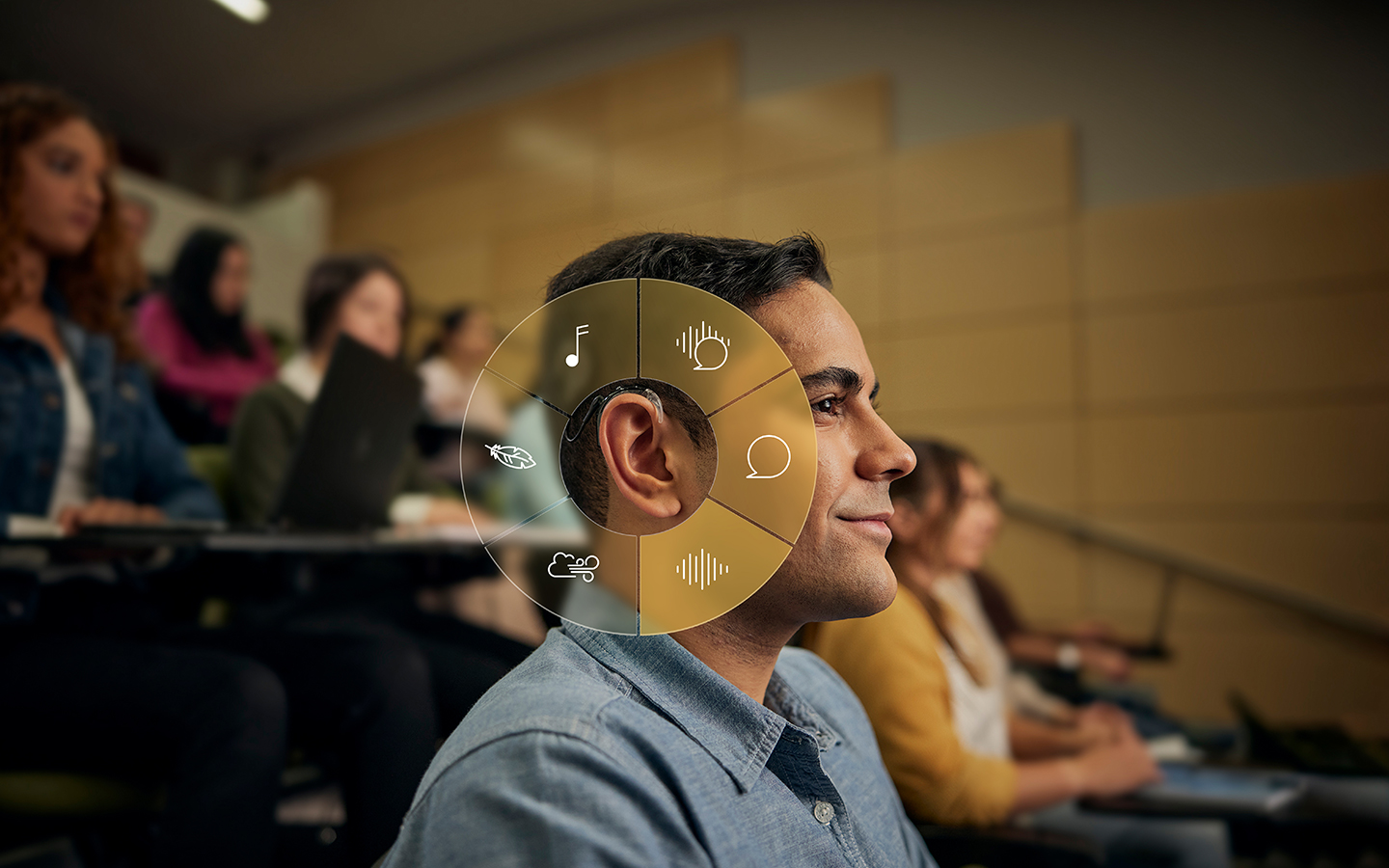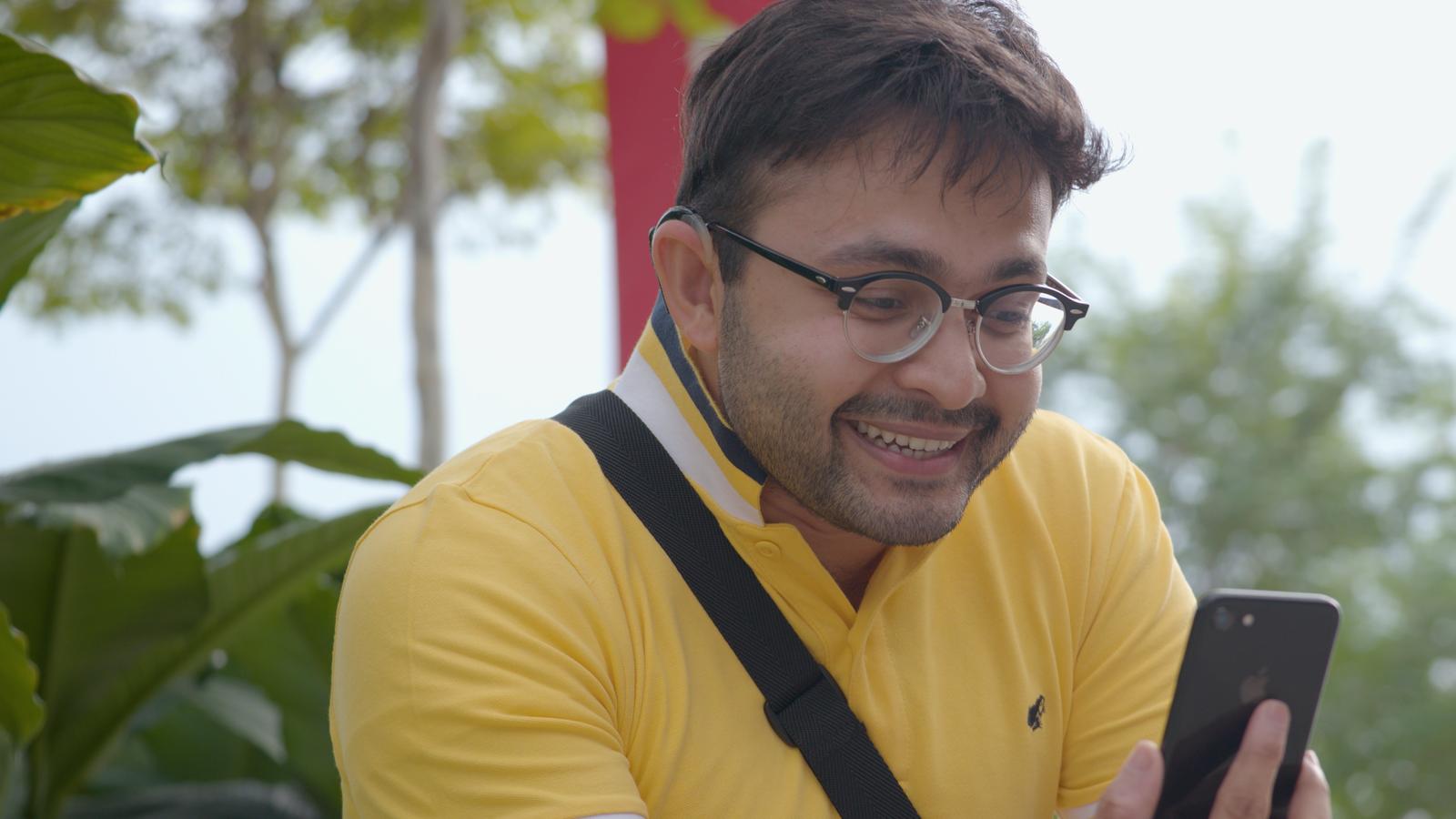Nucleus® smart sound processing technology
Whether you’re in a restaurant, classroom or office, our advanced Nucleus sound processors are designed to help you hear well.

What you'll find on this page
- How our hearing technology adapts to your listening environment.
- Hear speech more clearly in noise with ForwardFocus technology.
Experience the enhanced hearing
Inspired by connecting you with your world, we’re driven to innovate and deliver hearing technology to help you hear well, no matter where you are or where the day takes you.
Our sound processors feature technology that's designed to help you hear conversations clearly, particularly in noise. Whether you're walking in the park on a windy day, sitting in a work meeting or classroom, or chatting to friends in a noisy cafe, our advanced hearing technology automatically adjusts to give you optimal listening settings.1-4
Our advanced behind-the-ear sound processor, the Nucleus 8, features enhanced SmartSound IQ 2 with SCAN 2 technology* that senses changes in your listening environment and automatically adjusts to deliver clear sound.1-3
Focus on what’s important
Feel part of every conversation and immerse yourself in each moment. With ForwardFocus†, our advanced sound processors reduce unwanted noise from behind you, so you can hear face-to-face conversations more clearly.
Featuring enhanced ForwardFocus, the Nucleus® 8 Sound Processor is designed to more powerfully reduce background noise and can be user controlled or automated to help you focus on what's important in any situation.5,#
"With the Cochlear implant I don't have a problem understanding my family, my wife and my daughter."
- Mathias, Cochlear™ Nucleus® recipient

Disclaimer
Please seek advice from your health professional about treatments for hearing loss. Outcomes may vary, and your health professional will advise you about the factors which could affect your outcome. Always read the instructions for use. Not all products are available in all countries. Please contact your local Cochlear representative for product information.
For a full list of Cochlear’s trademarks, please visit our Terms of Use page.
Views expressed are those of the individual. Consult your health professional to determine if you are a candidate for Cochlear technology.
† ForwardFocus is a clinician-enabled feature that can be user-controlled or automated.
* Compared to Nucleus 6 and Nucleus 7 sound processors.
# Compared to Nucleus® 7 Sound Processor with ForwardFocus on.
For information regarding the compatibility of Cochlear’s Sound Processors with Apple or Android devices, visit www.cochlear.com/compatibilityApple, the Apple logo, Apple Watch, FaceTime, Made for iPad logo, Made for iPhone logo, Made for iPod logo, iPhone, iPad Pro, iPad Air, iPad mini, iPad and iPod touch are trademarks of Apple Inc., registered in the U.S. and other countries. App Store is a service mark of Apple Inc., registered in the U.S. and other countries.
Android is a trademark of Google LLC.
References
- Mauger SJ, et al. Clinical outcomes with the Kanso off-the-ear cochlear implant sound processor. Int J Audiol. (2017 Apr); 56(4): 267-276. [Sponsored by Cochlear].
- Mauger SJ, et al. Clinical evaluation of the Nucleus 6 cochlear implant system: performance improvements with SmartSound iQ. Int J Audiol. (2014 Aug); 53(8): 564-576. [Sponsored by Cochlear]
- Wolfe J, et al. Benefits of Adaptive Signal Processing in a Commercially Available Cochlear Implant Sound Processor. Otol Neurotol. (2015 Aug); 36(7):1181-90.
- Cochlear Limited D1864200 SCAN-X Design Description.
- Cochlear Limited. D1964109 Clinical Investigation Report CLTD5804 – (2022 Feb).






